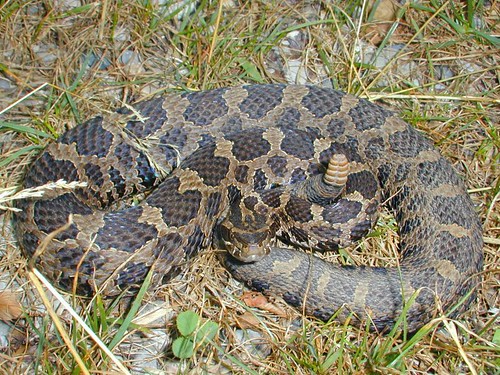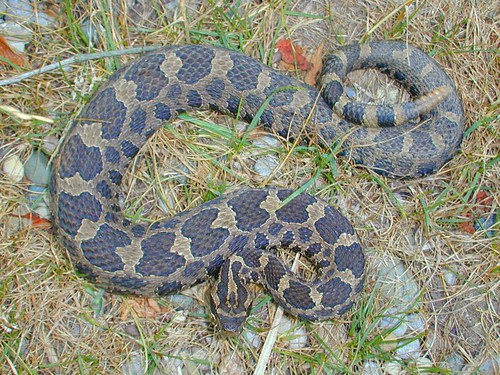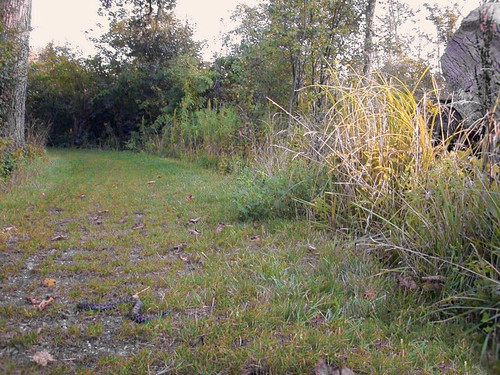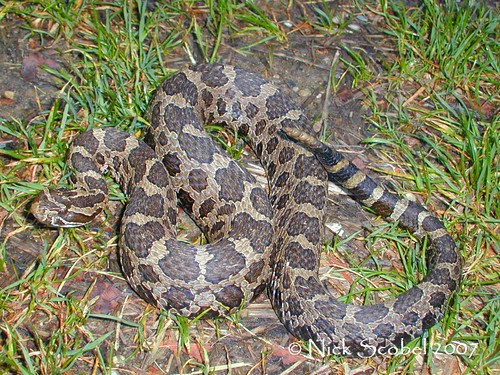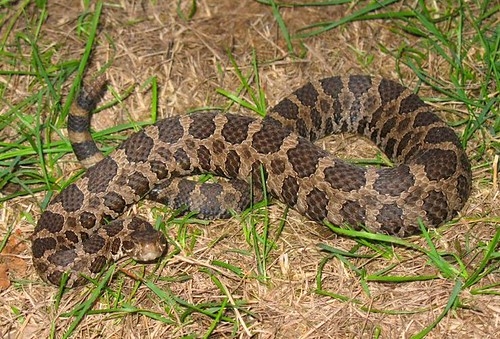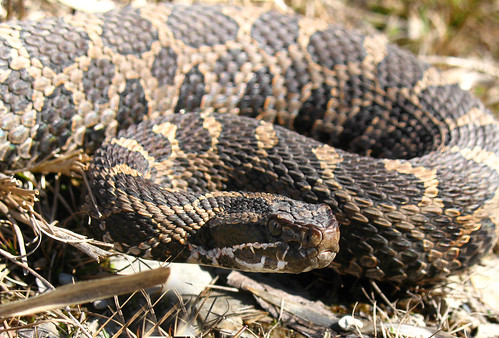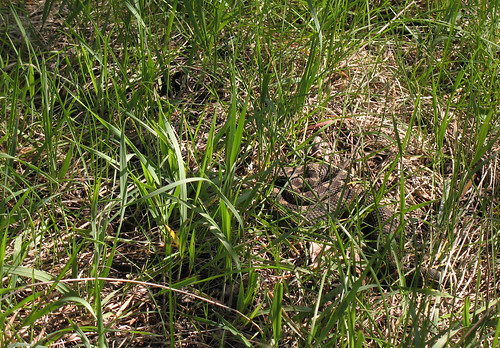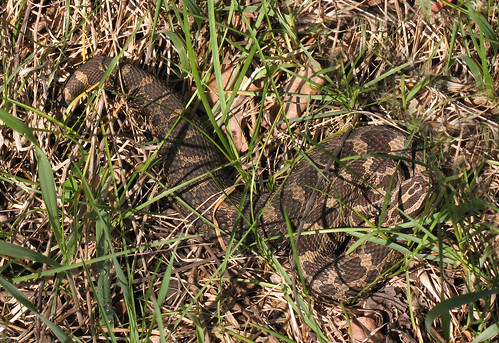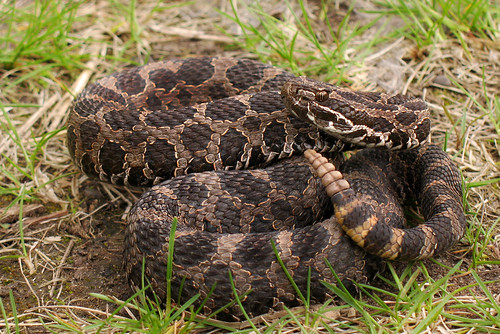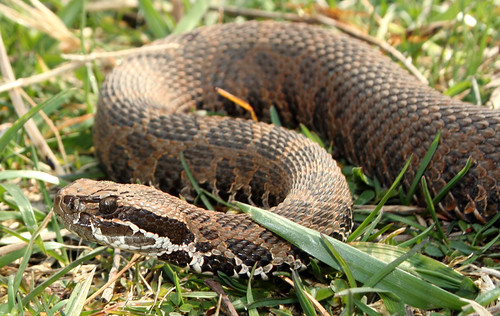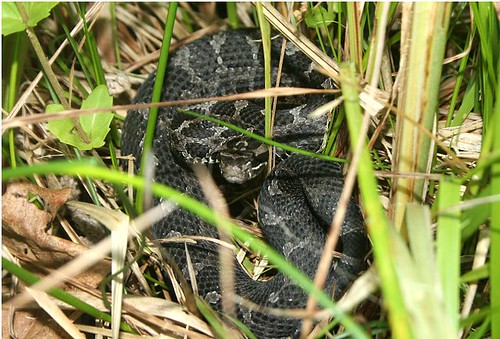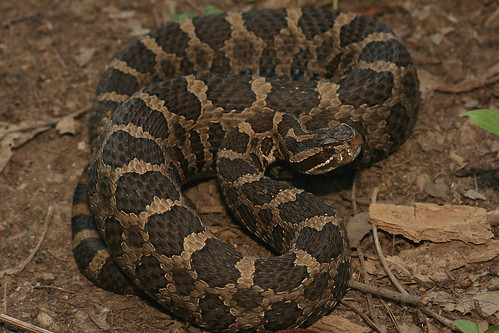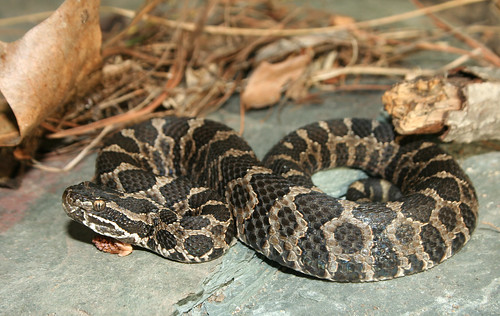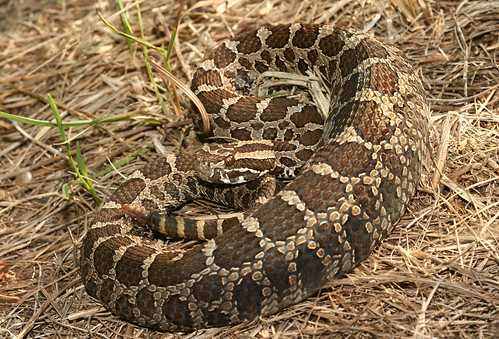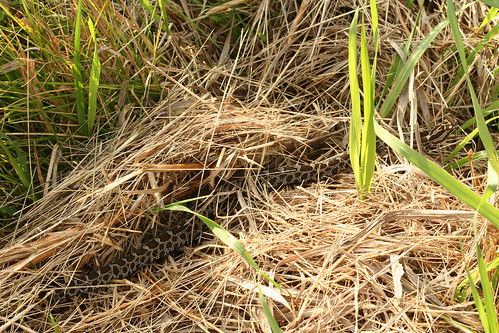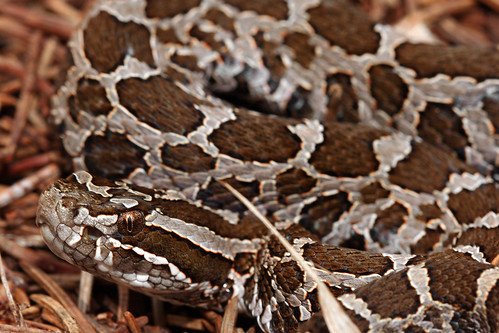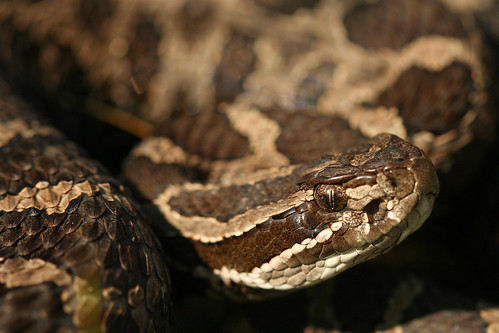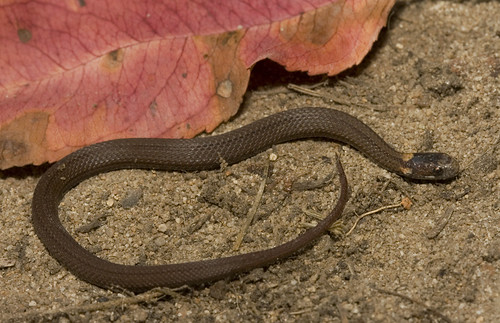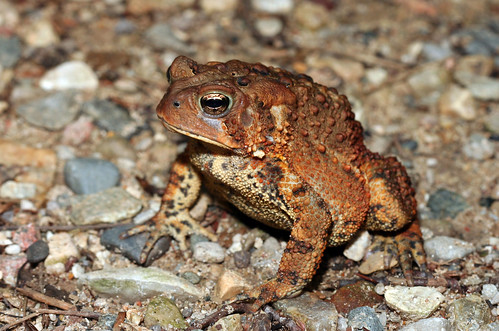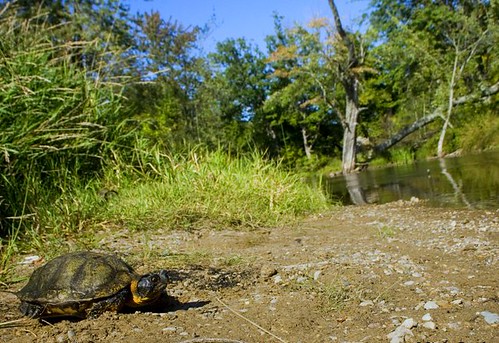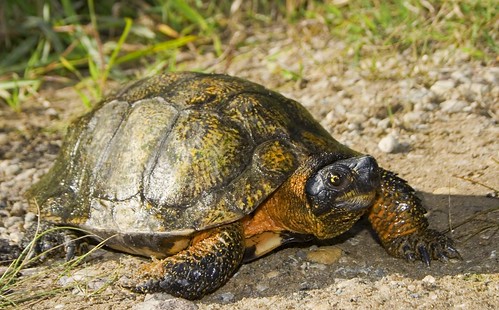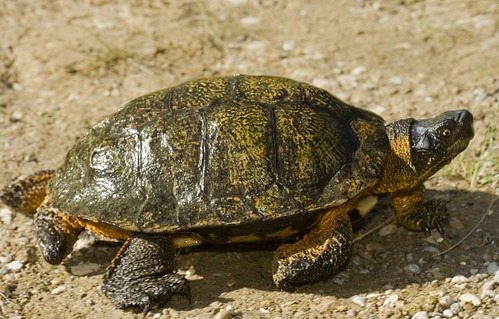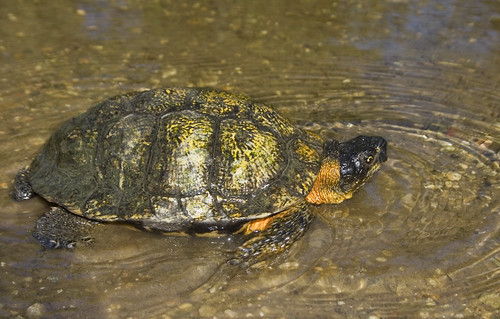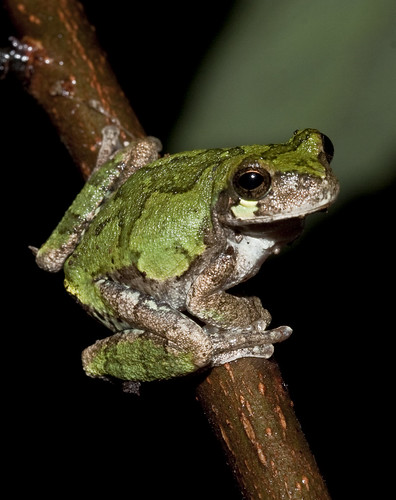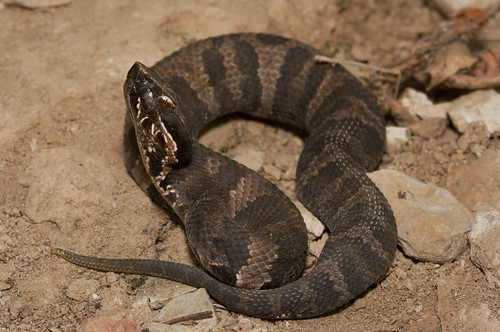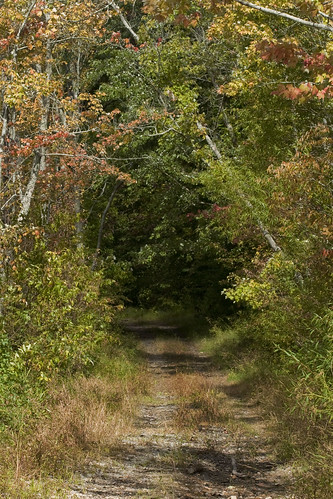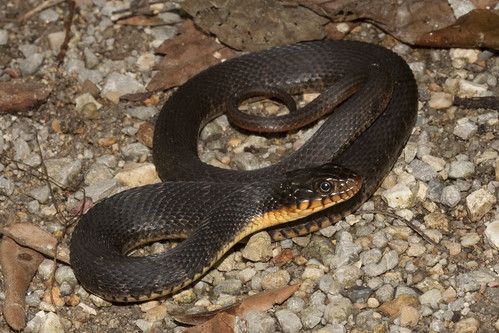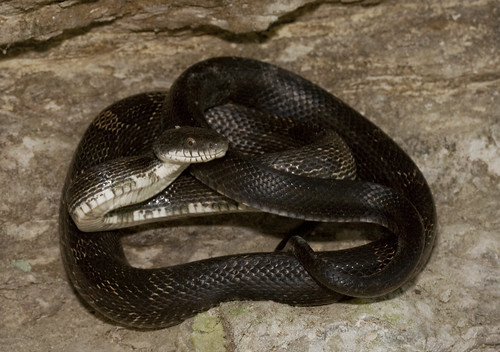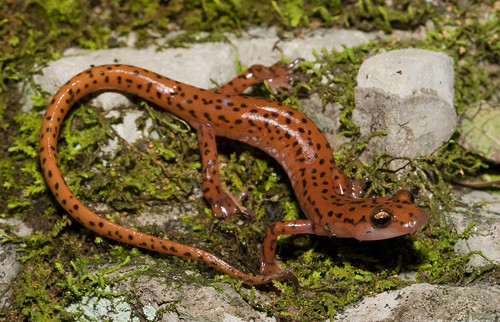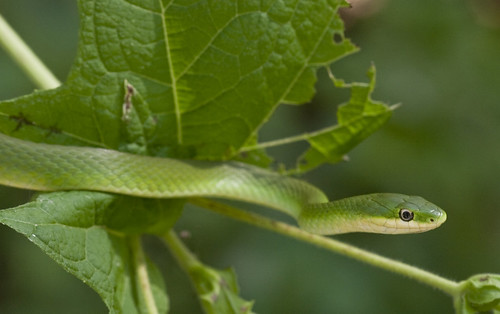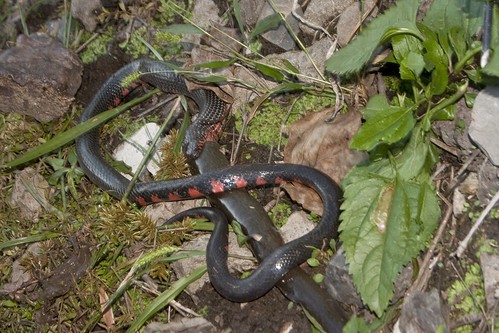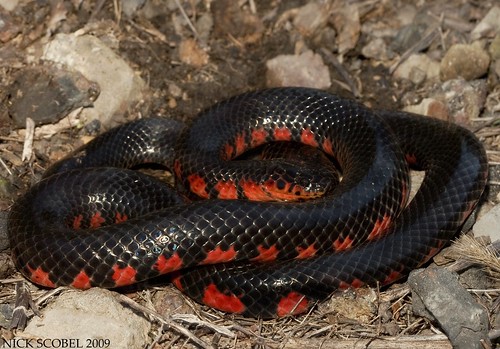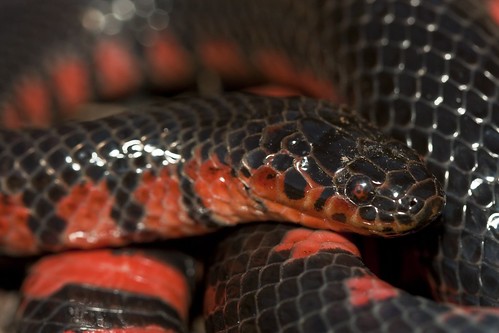Monday, December 28, 2009
Massasaugas from over the years...
The Eastern Massasauga Rattlesnake is Michigan's only species of venomous snake, and the Wolverine state is considered to be the stronghold for the species which is declining throughout its recognized range. In fact, its a is a candidate species for federal protection by the U.S. Fish & Wildlife Service and could be listed within the next few years. Ever since I got into herping a few years back, I've managed to compile quite a few field encounters with this species and have also kept a large photo collection of those encounters. So here's a big collection of photos of Massasaugas I've encountered over the years...
Thursday, December 24, 2009
Woody!
Some weekends during the fall can be quite slow around CMU's campus, especially when there isn't a home football game. But with the weather being pleasant through late October, these type of weekends allowed me to get out and herp the areas surrounding campus. With a little work on my own and some help from local herper Bryson Church, I was able to come up with a few target areas for some species that are particularly concentrated around campus. One one particular weekend, I headed a local area where a bunch of boards and debris had been discarded, and began flipping around and made a few nice finds.
Northern Red-bellied Snake - Storeria occipitomaculata
Five-lined Skink - Plestiodon fasciatus
American Toad - Bufo americanus
Later on, I moved to a strectch of river that has some nice mature woodlands along the banks. The area is ideal habitat for state threatened Wood Turtle. Along the way, we made a stop at drying vernal pond that serves as a breeding site for some salamanders, and flipped this nice looking sal.
Spotted Salamander - Ambystoma maculatum
I then decided to walk along the streamside to see if anything was out basking on logs or wandering about the woodlands. The temperature was in the mid 70s and perfect conditions for things to be out along the river.
As I was walking along this particular bank, I noticed a sound ahead of me which sounded like something moving around in the bushes, as I came around the bend in the river I looked ahead of me to see this.
A very attractive male Wood Turtle. My first one from the river system surrounding campus, I was quite excited to find this old fella. He was content to sit in his spot and allow me to spend a few monutes taking some photos of him.
Wood Turtle - Glyptemys insculpta
Eventually the old fella had decided he didn't want to be photographed anymore. He wandered on his way back towards the river, and I watched him as he went. I noticed the beautiful bright yellow tint to this individual's carapace, I have not seen another Wood Turtle with this bright of coloration. It was nice to be able to encounter this species as it is one of my favorites, and I look forward to seeing them in the wild next season.
Wednesday, December 23, 2009
Return to Southern Illinois
After a two year haitus, I finally was able to find a weekend to make my return to the southern region of Illinois. The area is not only unique geologically; limestone bluffs several hundred feet adjacent to a massive swamp, but also it is unique herpetologically. With the region's location geographically, there is a overlap of not only northern and southern species, but also eastern and western species. So after a long day of class, my two friends and I began our long journey from Central Michigan's campus to the Shawnee National Forest. After driving through some herrendous thunderstorms, we arrived to around 1 AM and immediately hit some area. The weather was a bit cool, but rains had brought out the amphibians and our first species was one I was hoping we would see.
Bird-voiced Tree Frog - Hyla avivoca
The following morning we woke early in order to spend our first morning in the forest. The weather was cool, but temps were to reach the low 70s in the mid afternoon, a perfect day for herp movement along the limestone bluffs. It took til about mid-day for the sun to crest over the bluffs and hit the hillsides, but once that happened the area came alive. Our first snake find of the day was not surprisingly, a western cottonmouth. The massive cypress swamp coupled with limestone bluffs with crevices that serve as dens, creates a perfect environment for this species. Cottons are by far the most dominant snake species in the area. The snake was a juvenile around 10 inches in length.
Western Cottonmouth - Agkistrodon piscivorus leucostoma
The swamplands of the area are home to a plethera of amphibian species, including aquatics such as the Lessier Siren. There is an almost eerie appearance to the dead stands of strees which populate the swampy expanse.
Several sections of the forest are bisected by roads which pass through great habitat. And sometimes simply walking these areas can be productive. The roads soak up warmth from the sun and provide a great area for snakes and other herps to bask upon.
Here's a few of the common inhabitants of the area as found basking on the roadways...
Western Ribbon Snake - Thamnophis proximus
Yellow-bellied Water Snake - Nerodia erythrogaster flavigaster
As the day progressed, the sunlit sloped near the bluffs became the area of focus. Almost immediately after setting into the bluffs, we found our largest cottonmouth of the trip. This adult easily reached three feet in length. It was content to sit and hold its ground, which worked out fantastic for photographic purposes.
Western Cottonmouth - Agkistrodon piscivorus leucostoma
Within minutes of letting the cotton on its way, we came across our first of several black rat snakes for the trip.
Black Rat Snake - Pantherophis obsoletus
After looking for snakes, we decided to focus one of my favorite salamander species. The crevices in the limestone bluff walls are often wet and serve as perfect habitat for Plethodontid salamander species which require moisture to breath through their skin because they lack lungs. Within a few minutes, we turned up several individuals. They are one of the most attractive salamander species in eastern North America in my opinion.
Cave Salamander - Eurycea lucifuga
Another species that makes its presence felt often is the Rough Green Snake. This arboreal species is a common inhabitant of the region. And although their vine-like appearance and green coloration make them very cryptic, their sheer numbers ensure that eventually you'll come across one.
Rough Green Snakes - Opheodrys aestivus
On Saturday, the area became very heavy with visitors. So we decided to head about 30 miles away from our location to try another productive site which would be nowhere near as crowded. Several species of salamanders inhabit the area, and it didn't take long to find our target species at the site.
Marbled Salamander - Ambystoma opacum
With all that we had seen, I would've considered at that point the trip to be a complete success. However, what we stumbled upon next is one of the most things I've ever seen in the wild. Mud snakes are a thing of an almost mythical aura in the area, and to find one is something that some people who visit the area frequently have never seen. It's not that mud snakes are rare, its just that their habits of being a swamp snake rarely buts them outside of an aquatic environment where they spend the majority of their life searching for their prey, sirens. Imagine my disbelief when our group stumled across this scene near a swamp edge.
Yes, that is indeed a Western Mud Snake engulfing a Western Lesser Siren. Two lifers at once, and in a fashion I would have never expected. Unfortunately, as soon as I snapped this shot the snake regurged the very much still alive siren, which quickly flopped back into the swamp. However, it did allow us to get a great chance to look the mud. It was amazing way to end another trip to southern Illinois. I'll be back next fall...
Western Mudsnake - Farancia abacura reinwardtii
Subscribe to:
Posts (Atom)

